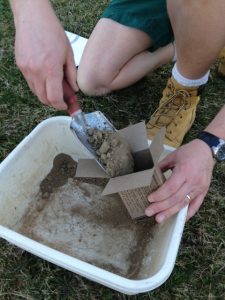Sweet Corn IPM Newsletter No. 11 – September 11, 2020
Last Issue for 2020
Click on photos to enlarge.
Sweet Corn IPM Newsletter No. 11 – September 11, 2020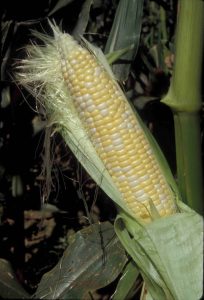
EARWORM, ARMYWORM COUNTS HIGHER TO END THE SEASON
Fall Armyworm Still Threatens Late Maturing Corn in Many Fields
This will be the final issue of the Sweet Corn IPM Newsletter for the 2020 season. I would like to thank all of the growers who participated in the program this year, and our team of IPM scouts, including: Lindsey Ridlon, Kara Rowley and Sean McAuley. Special thanks to Caitlin Ramsay for taking over the editing and mailing of the newsletter under very challenging circumstances this season.
SITUATION
Corn sales were good on Labor Day, as they have been through the season. Although demand typically drops off after the holiday, the strong farm stands sales this year may buck that trend somewhat, if fresh corn is still available. Many fields are still dry, but ear quality has mostly been very good. Pest pressure increased this week, with jumps in both corn earworm and fall armyworm numbers, likely due to warm fronts coming up from the south and higher night temperatures.
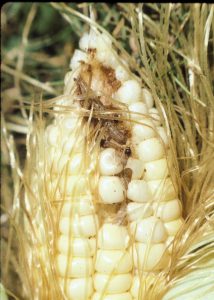
European corn borer:
It doesn’t appear that a partial second-generation, that was seen in some locations, gained any traction. Larval feeding injury was not over the 15% control threshold for pre-silking corn, and moth counts were not over the weekly threshold of five for silking corn at any site this week.
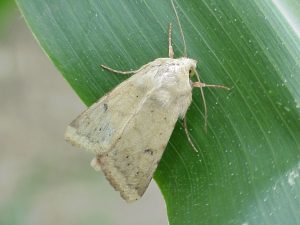
Corn earworm:
Moth captures increased significantly in some sites this week, while others continued to see low numbers. A four-day interval for silking corn was recommended at Biddeford, Cape Elizabeth, one Dayton site, New Gloucester, Poland Spring, Wayne and one Dayton site. A six-day spray interval was recommended at one Dayton site, and one Wells site.

Fall armyworm (FAW):
Moth captures increased at most locations and were over threshold at nearly all sites, including: Biddeford, Bowdoinham, Cape Elizabeth, Dayton, New Gloucester, Oxford, Wayne and Wells. The Bowdoinham, Oxford and Wells sites were not also under a spray interval for corn earworm, so sprays were recommended for silking corn.
Annual End of Corn Season Checklist:
- Plow down corn stalks and stubble to destroy overwintering larvae of European corn borer
- Plant a cover crop, such as winter rye, to prevent soil erosion and to add organic matter to the soil.
- Take a soil test to determine if lime or other nutrients should be applied.
- Plan to rotate your crops to prevent pests from building up in any one location.
- Review weed control; what worked and what didn’t? What were the problem weeds? Match herbicides and cultivation practices for those next year.
- Unplowed Corn Field; photo by David Handley
- Corn Field Plowed Down; photo by David Handley
- Soil Sample Collection, photo by David Handley
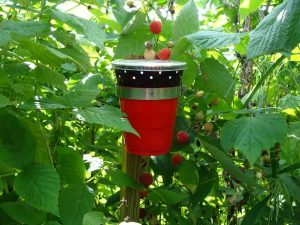
Spotted wing drosophila:
Trap counts have been very high at nearly all locations, meaning there is a very high threat level for any ripening fruit remaining in berry fields. Growers should maintain a tight, regular (5-7 day) spray schedule to prevent larvae from infesting fruit. For more information visit our website
Sincerely,
David T. Handley
Vegetable & Small Fruit Specialist
Highmoor Farm Pest Mgmt. Unit
P.O. Box 179 17 Godfrey Drive
52 U.S. Route 202 Orono, ME 04473
Monmouth, ME 04259 1.800.287.0279
207.933.2100
| Location | CEW
Moths |
ECB
Moths |
FAW
Moths |
Recommendations / Comments |
|---|---|---|---|---|
| Biddeford | 10 | 1 | 35 | 4-day spray interval for all silking corn |
| Bowdoinham | 0 | 18 | One spray on silking corn for FAW | |
| Cape Elizabeth I | 19 | 0 | 27 | 4-day spray interval for all silking corn |
| Cape Elizabeth II | 25 | 0 | 18 | 4-day spray interval for all silking corn |
| Dayton I | 18 | 0 | 7 | 4-day spray interval for all silking corn |
| Dayton II | 2 | 0 | 14 | 6-day spray interval for all silking corn |
| New Gloucester | 44 | 0 | 11 | 4-day spray interval for all silking corn |
| Oxford | 0* | 0 | 12 | One spray on silking corn for FAW (*Trap down) |
| Poland Spring | 50 | 0 | 2 | 4-day spray interval for all silking corn |
| Sabattus | 0 | 0 | 0* | No spray recommended (*Trap down) |
| Wayne | 38 | 2 | 24 | 4-day spray interval for all silking corn |
| Wells I | 3 | 4 | 6-day spray interval for all silking corn | |
| Wells II | 0 | 0 | 24 | One spray on silking corn for FAW |
CEW: Corn earworm (Only fresh silking corn should be sprayed for this insect.)
ECB: European corn borer
FAW: Fall armyworm
| Moths caught per week | Moths caught per night | Spray interval |
|---|---|---|
| 0.0 to 1.4 | 0.0 to 0.2 | No spray |
| 1.5 to 3.5 | 0.3 to 0.5 | Spray every 6 days |
| 3.6 to 7.0 | 0.6 to 1.0 | Spray every 5 days |
| 7.1 to 91 | 1.1 to 13.0 | Spray every 4 days |
| More than 91 | More than 13 | Spray every 3 days |
Thresholds apply only to corn with exposed fresh silk. Lengthen spray intervals by one day if the maximum daily temperature is less than 80°F.
European Corn Borer Thresholds
Whorl stage: 30% or more of plants scouted show injury.
Pre-tassel-silk: 15% or more of plants scouted show injury.
Silk: 5 or more moths caught in pheromone traps in one week.
IPM Web Pages :
Where brand names or company names are used, it is for the reader’s information. No endorsement is implied nor is any discrimination intended against other products with similar ingredients. Always consult product labels for rates, application instructions and safety precautions. Users of these products assume all associated risks.
The University of Maine is an equal opportunity/affirmative action institution.



